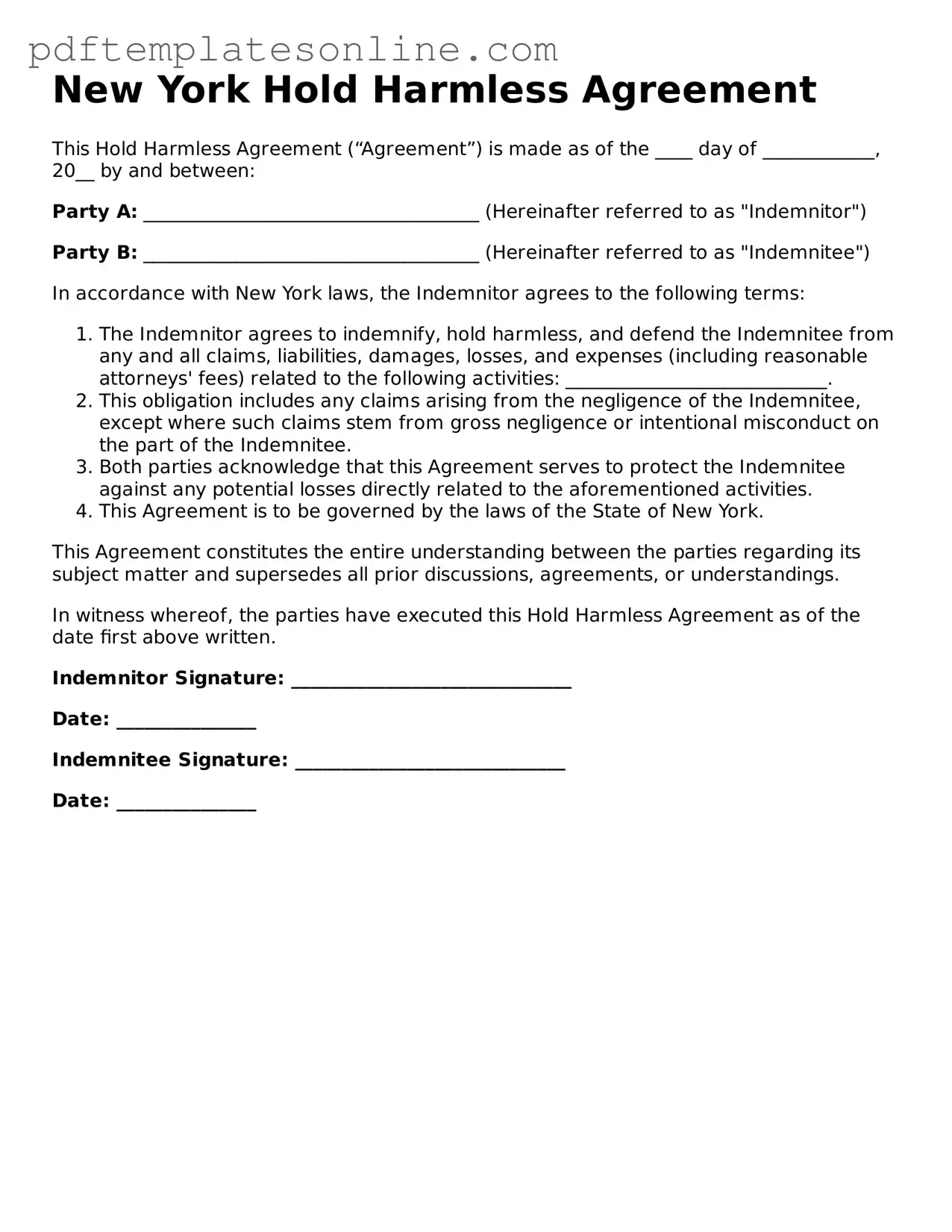When completing the New York Hold Harmless Agreement form, individuals often make several common mistakes that can lead to complications. One frequent error is failing to read the entire document thoroughly. This oversight can result in misunderstandings about the terms and conditions outlined in the agreement.
Another mistake is neglecting to provide accurate and complete information. Incomplete details can create ambiguity, which may affect the enforceability of the agreement. It is essential to ensure that all required fields are filled out correctly, including names, dates, and specific activities covered by the agreement.
People sometimes overlook the importance of signatures. A common error is forgetting to sign the document or having the wrong person sign it. Each party involved should sign the agreement to validate its terms. Without proper signatures, the agreement may not hold up in a legal context.
In addition, individuals often fail to specify the scope of indemnification. A vague description can lead to confusion about what liabilities are being covered. Clearly outlining the responsibilities and risks associated with the agreement helps to avoid future disputes.
Another mistake is not consulting with legal counsel when necessary. Some individuals believe they can fill out the form without professional guidance. However, legal advice can provide clarity on the implications of the agreement and ensure that it aligns with personal and legal interests.
People may also forget to date the agreement. An undated form can lead to questions about when the agreement was made and the relevance of its terms. Including the date is crucial for establishing the timeline of the agreement.
Additionally, individuals sometimes fail to retain a copy of the signed agreement. Keeping a record is important for future reference and can serve as evidence if disputes arise. Without a copy, individuals may find it challenging to assert their rights under the agreement.
Lastly, some individuals ignore the need for witnesses or notarization, if applicable. Depending on the nature of the agreement, having a witness or notarizing the document can add an extra layer of validity. Neglecting this step may weaken the agreement's enforceability.
